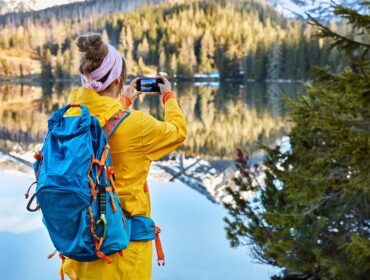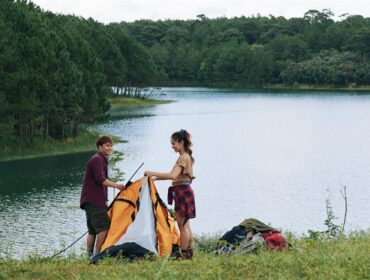In today’s hyper-connected, always-on world, stress and burnout have become part of everyday life. The antidote? It might be as simple as a walk in the woods. Welcome to the world of forest bathing—a mindful, immersive practice that reconnects us with the natural world and offers powerful physical and mental health benefits.
But what exactly is forest bathing, and how can beginners get started? This guide breaks it down and offers practical tips to help you experience the restorative magic of nature’s therapy.
What Is Forest Bathing?
Forest bathing, or shinrin-yoku, originated in Japan in the 1980s as a response to rising stress and urbanization. The term translates to “taking in the forest atmosphere” or “forest bathing,” but it’s not about swimming or hiking. It’s about slow, mindful immersion in a forest setting using all five senses.
Unlike a workout or nature hike, forest bathing is not goal-oriented. You’re not trying to reach a destination or track mileage. You’re simply there to be—letting the sights, sounds, scents, and textures of nature wash over you.
Why Forest Bathing Works
Researchers have found that forest bathing can lower cortisol levels, reduce blood pressure, and boost the immune system. Here’s why it works:
1. Nature Reduces Stress
Natural environments calm the nervous system. Trees release essential oils called phytoncides that have antimicrobial properties and are believed to lower stress hormones when inhaled.
2. It Boosts Immunity
Studies show increased activity of natural killer (NK) cells—part of our immune defense—after forest bathing. These effects can last for several days.
3. Improved Mood and Focus
Time in the forest can increase dopamine and serotonin levels, which are linked to improved mood. It also helps restore attention capacity, especially in people with mental fatigue or ADHD.
4. Better Sleep and Recovery
By lowering heart rate and quieting the mind, forest bathing prepares your body for deeper, more restorative sleep.
Who Can Benefit from Forest Bathing?
The short answer? Everyone.
-
Busy professionals: A natural way to unplug and recharge
-
Students: Helps with focus and stress before exams
-
Seniors: Gentle physical activity with health benefits
-
Children: Encourages mindfulness and creativity
-
Outdoor enthusiasts: Deepens their connection with nature
-
People recovering from illness or trauma: A gentle path to healing
No special skills, gear, or fitness level required—just a willingness to be present.
Forest Bathing vs. Hiking: What’s the Difference?
Although both involve time in nature, forest bathing is a slower and more contemplative practice compared to hiking.
| Forest Bathing | Hiking |
|---|---|
| Slow pace | Moderate to fast pace |
| Mindfulness-focused | Exercise or exploration-focused |
| Stops frequently | Continuous movement |
| All senses engaged | Visual and physical focus |
| No specific goal or distance | Often destination-based |
You can practice forest bathing on a hiking trail, but the intention is different. It’s about immersion, not movement.
How to Practice Forest Bathing: Step-by-Step Guide
Step 1: Find a Natural Setting
While forests are ideal, you can practice in any green space—a wooded park, botanical garden, riverside trail, or even a quiet backyard. The key is to find a place where you can walk slowly and feel relatively undisturbed.
Look for:
-
Minimal foot traffic
-
Variety of plant life
-
Soft ground (leaves, moss, or dirt)
-
Birdsongs or natural sounds
Step 2: Leave Devices Behind
Turn off your phone, smartwatch, and anything else that might buzz or ping. The goal is to disconnect from technology so you can fully reconnect with your surroundings.
If you’re concerned about safety, keep your phone off and in your pocket just for emergencies.
Step 3: Set an Intention, Not a Goal
Before you begin, take a moment to ask yourself:
“What do I need from nature today?”
It could be clarity, calm, healing, or just a break. Let that intention guide your experience, but don’t try to “achieve” anything. Forest bathing is about being, not doing.
Step 4: Engage Your Senses One by One
Start walking slowly—slower than you think you need to. Then, pause often to focus on each sense:
-
Sight: Observe light through the leaves, tree textures, colors, patterns
-
Sound: Listen to rustling leaves, birds, insects, wind
-
Smell: Inhale deeply—earth, flowers, bark, pine
-
Touch: Feel rough bark, smooth stones, damp moss
-
Taste: (Optional) Sip fresh air or, if safe and knowledgeable, try edible plants
The goal is to be present—not to analyze or label, just observe and receive.
Step 5: Sit, Lie Down, or Be Still
Find a quiet spot to sit on a log, patch of grass, or large rock. Close your eyes and breathe. This stillness deepens your sensory awareness and can often lead to the most profound moments of calm and connection.
Step 6: Reflect Gently
After 30–60 minutes, begin walking back. You don’t need to journal or analyze the experience (though you can). Simply reflect on how your body feels. Are you more relaxed? More alert? More present?
Tips for a Deeper Forest Bathing Experience
-
Go alone or with a quiet partner
-
Avoid talking during the session
-
Forest bathe during different times of the day or seasons
-
Bring water and dress comfortably in layers
-
Don’t rush—schedule at least an hour
For added mindfulness, consider incorporating gentle breathing, yoga, or stretching into your practice.
Can You Practice Forest Bathing in the City?
Yes. While deep forests offer the richest experience, studies show that urban green spaces—such as parks, arboretums, and tree-lined trails—can also reduce stress and elevate mood.
Some creative ways to forest bathe in the city:
-
Early morning walks through a botanical garden
-
Lunchtime breaks in a shaded city park
-
Weekend trips to nearby trails or nature reserves
-
Balcony or backyard nature immersion (with potted plants and birdsong audio)
The key is intentionality and sensory engagement, not location perfection.
Recommended Gear for Forest Bathing from SunnySports
Although forest bathing doesn’t require much, a few thoughtfully chosen items can enhance your comfort and immersion:
Therm-a-Rest Z Seat Pad
-
Lightweight and foldable
-
Perfect for sitting on damp ground or tree stumps
-
Provides warmth and comfort during still moments
Teva Original Universal Sandals
-
Quick-dry straps, comfortable sole
-
Great for short walks in warm weather
-
Let your feet breathe while staying supported
REI Co-op Sahara Shade Hoodie (Men/Women)
-
Lightweight sun protection
-
Breathable and ideal for forest settings
-
Keeps bugs and UV rays off your skin
UCO Candle Lantern Kit
-
Adds a calming, natural glow for early morning or evening sessions
-
Ideal for backyard forest bathing
Find these and more comfort-enhancing outdoor gear at SunnySports.com.
Final Thoughts
Forest bathing isn’t about conquering a trail or climbing a peak—it’s about surrendering to the forest and letting it heal you. Whether you’re walking beneath towering pines, listening to a stream trickle through mossy stones, or simply sitting quietly beneath a canopy of leaves, you’re reconnecting with a deeper part of yourself.
In a world that constantly demands your attention, forest bathing invites you to pause—to breathe, listen, and simply be. And in that stillness, you may just rediscover clarity, calm, and wonder.
So the next time you’re feeling overwhelmed, don’t reach for your phone. Head to the woods. Let the forest bathe you.
FAQs
Do I need a guide to practice forest bathing?
No, you can practice on your own. However, guided forest bathing walks can help deepen your experience, especially as a beginner.
How often should I forest bathe?
Even once a week can have measurable benefits. Ideally, spend 2–3 hours per week in nature, broken into multiple sessions if needed.
Can children do forest bathing?
Absolutely. In fact, it’s a great way to nurture mindfulness, curiosity, and calm in children.
Is it safe to forest bathe alone?
Yes, but choose safe, familiar locations and let someone know where you’re going if it’s a remote area.
Is forest bathing a spiritual practice?
It can be, but it doesn’t have to be. Forest bathing is non-religious and accessible to everyone.





